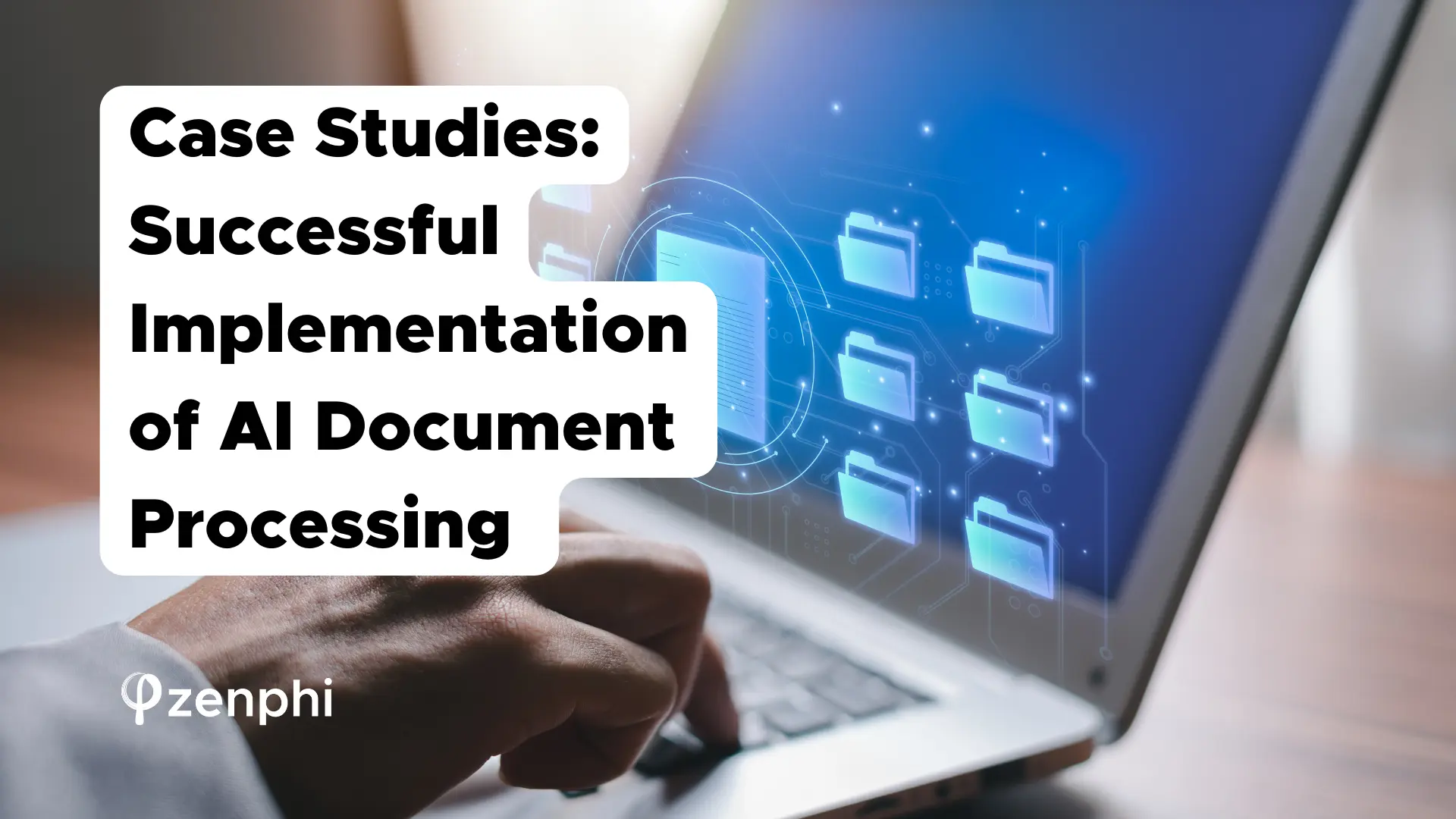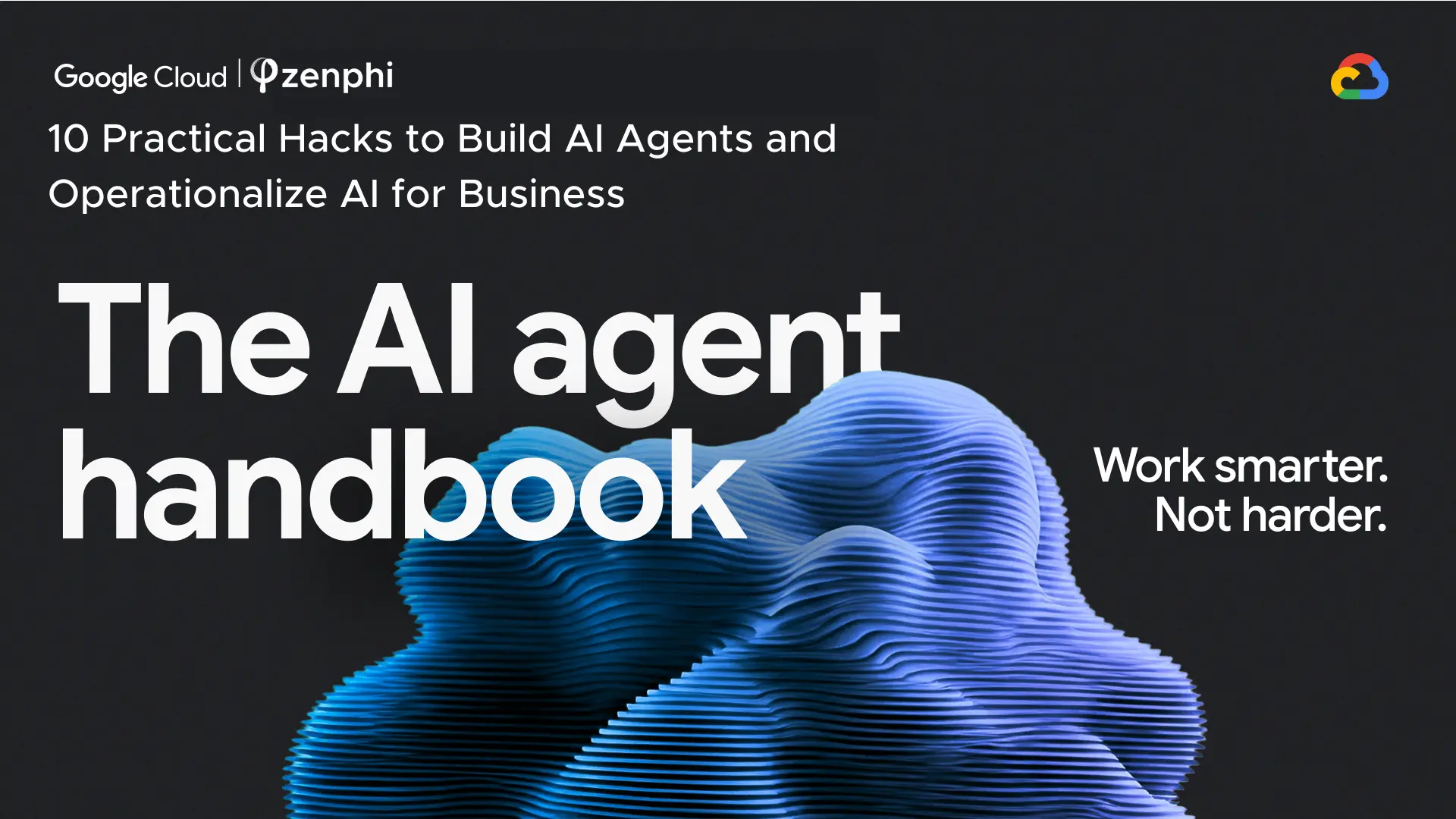AI Automation For Procurement , AI Document Processing , AI Enablement For Finance Teams , AI Enablement For Sales Teams , AI-Powered Workflows For HR , Automating Marketing With AI , Operationalize AI For Business
Considering implementing AI Document processing but not sure if it’s a good fit for your company? Read these case studies and learn what to expect as a project outcome.
Table of Contents
AI Document Processing vs Intelligent Document Processing
AI Document Processing, also sometimes referred to as AI document workflow automation is actually the same thing as Intelligent Document Processing (IDP). Both processes refer to AI Process Automation or the use of artificial intelligence technologies to automate the extraction, classification, and management of data from various types of documents. This technology leverages advanced tools like machine learning, natural language processing (NLP), and optical character recognition (OCR) to handle unstructured data, transforming it into structured and usable information. If your company is using Google Workspace, we highly recommend to read here more on Intelligent Document processing for Google Workspace.
Benefits of AI Document Processing
According to EY Global and Salesforce newest research AI Document processing outperforms traditional document procession in every respect — from the lower labor cost to less errors, to higher efficiency.
Comparison Of Traditional Manual Document Processing & AI Document Processing
AI Document Processing visibly outperforms traditional document processing across several key metrics
In general, surveys show that most managers rate the following outcomes of AI Document processing (or AI document workflow automation) as the most important ones for their businesses:
Increased Efficiency: AI document processing significantly reduces the time required to handle large volumes of documents, allowing businesses to process information faster than traditional manual methods.
Enhanced Accuracy: By minimizing human intervention, AI systems reduce the likelihood of errors in data extraction and processing, leading to more reliable outcomes.
Cost Savings: Automating document processing reduces the need for extensive manual labor, resulting in lower operational costs and allowing staff to focus on higher-value tasks.
Scalability: AI solutions can easily scale to handle increasing volumes of documents without a corresponding increase in processing time or resources.
Improved Compliance: AI systems can ensure that documents are processed in accordance with regulatory requirements, reducing the risk of non-compliance and associated penalties.
Unsure If AI Document Processing Makes Sense For You?
4 Case Studies: AI Document Processing Implementation In Banking, Insurance, Wholesale and more
According to Super.AI, 5 years ago, banking and insurance used to led the way as the largest adopters of AI Document processing technologies with banking vertical covering 30% of the demand, and insurance 13%.
It makes total sense, as these industries probably contain the most document-centric processes. For example, Insurance business presumes hundreds if not thousands of insurance claims processing a day. However, in 2024 more businesses and industry verticals have started leveraging the benefits of AI document processing, including logistics, transportation, public and private education and more.
Let’s see in detail real-world example of successful AI document processing implementation.
AI Document Processing In Banking: JP Morgan and Legal Document Analysis
Challenge: Analyzing legal documents, such as contracts, is a time-consuming and error-prone process. JP Morgan sought to streamline this process, reducing the time and effort required while increasing accuracy.
Solution: JP Morgan implemented an AI-powered tool, COIN (Contract Intelligence), to analyze legal documents quickly and accurately. COIN uses NLP to interpret and extract relevant information from contracts, significantly reducing the time required for document review.
Overall Impact:
-
Dramatic reduction in time required for legal document analysis.
-
Increased accuracy and reduced human error in contract interpretation.
Key Learnings:
-
AI can efficiently handle large volumes of data, offering speed and accuracy.
-
Automation in legal processes can significantly enhance operational efficiency.
AI Document Processing In Insurance: Nordic Insurance Company
Challenge: A leading insurance firm in the Nordics faced inefficiencies in its claims management process due to the manual handling of each claim. The workflow was time-consuming and involved repetitive tasks that required agents to thoroughly examine and categorize unstructured data from various sources, such as bills, invoices, and medical documents. This resulted in slow processing times and hindered customer service efficiency.
Solution: The insurance company collaborated with an AI Document processing solution provider EY to develop a customized software aimed at modernizing its claims management process. Using machine learning and natural language processing (NLP), the resulting system automated the extraction, classification, and processing of claims data. The solution was integrated with the insurer’s legacy system and scaled to meet specific requirements, enabling near real-time processing of claim documents.
Outcomes:
- Efficiency: The solution enabled near real-time processing of claims, with 70% of documents correctly extracted and interpreted.
- Agent Productivity: Agents were freed from repetitive tasks, allowing them to focus on enhancing customer interactions and providing personalized advice.
- Customer Service: Improved processing speed and accuracy enhanced overall customer service and satisfaction.
- Global Expansion: The operational efficiencies gained facilitated the insurer’s global expansion goals.
- Transparency: The controlled set of confidence levels ensured transparency and avoided black-box AI implementation.
Key Learnings:
- Human-Centric AI: Placing humans at the center of AI transformation enhances acceptance and effectiveness.
- Scalability: AI solutions must be scalable and customizable to meet specific organizational needs.
- Collaboration: Successful implementation requires close collaboration across multiple teams and geographies.
- Continuous Improvement: AI systems improve over time, offering ongoing value and insights.

AI Document Processing In Real Estate Business
A case study, published in 2022 by Oracle, highlights how the Oracle Content management system was successfully used to create a custom solution for a big real estate company and assist it with intelligent document processing.
Challenge: A large real estate company faced inefficiencies due to using multiple disparate systems for managing real estate transactions. These transactions involved numerous documents, such as listing agreements, offer and counteroffer documents, and regulatory disclosures. The manual processing of these documents was time-consuming, error-prone, and costly, necessitating a more streamlined and integrated solution.
Solution: Oracle partnered with the real estate company to develop a comprehensive cloud-based document processing solution. The implementation leveraged Oracle PaaS, SaaS, and IaaS capabilities to create an end-to-end system that integrated document capture, extraction, and management functionalities. Key technologies used included Oracle Content Capture, Oracle WebCenter Forms Recognition, and Oracle Content Management.
- Oracle Content Capture: Scalable, cloud-based platform for capturing documents from various sources such as email, scanners, and file folders.
- Oracle WebCenter Forms Recognition: Utilized intelligent OCR to extract key data fields like property address, listing price, and commission rates from documents.
- Oracle Content Management: Provided a secure, scalable repository for storing documents and extracted metadata, supporting advanced business workflows.
Outcomes:
- Increased Efficiency: The new system replaced multiple disparate solutions, significantly reducing the time required to process real estate transactions.
- Cost Reduction: By automating document processing, the company lowered operational costs associated with manual handling and disparate systems.
- Enhanced Integration: The seamless integration between document capture, data extraction, and content management streamlined operations and improved data accuracy.
- Scalability and Flexibility: The cloud-based solution offered scalable and flexible document processing capabilities, accommodating varying volumes and types of documents.
Key Learnings:
- Comprehensive Integration: Leveraging a unified platform that integrates capture, recognition, and management functionalities can drastically improve operational efficiency.
- Scalability: Cloud-based solutions offer the scalability necessary to handle large volumes of documents without the need for extensive hardware provisioning.
- Data Accuracy: Intelligent OCR technologies significantly enhance data extraction accuracy, reducing errors associated with manual processing.
- Future Potential: The architecture and implementation strategy used for this case can be applied to other document-intensive processes, such as HR forms, college admissions, medical forms, government forms, and legal documents.
AI Document Processing In Procurement Service & Wholesale
Challenge: Tavezio (ex-H&H Purchasing), a procurement services company based in Florida, faced significant inefficiencies due to manual invoice processing. Handling large volumes of invoices for clients, including schools and summer camps, the team struggled with time-consuming and error-prone manual processes. As the business grew, these manual methods became unsustainable, requiring up to nine additional staff members during peak periods and leading to high operational costs and overtime work.
Solution: As a Google Workspace user, Tavezio chose the only Intelligent Document processing for Google Workspace — Zenphi. It allowed Tavezio to ensure all their data is kept securely within Google Workspace and leverage native capabilities of Google without the need to invest in expensive third-party solutions (Read more on Affordable Intelligent Document Processing Tools).
The initial automation process built using Zenphi automations included:
- Tracking the event of the invoice arrival in the mailbox
- Renaming PDFs on arrival.
- Extracting key information from invoices.
- Exporting data to CSV files.
- Routing information through a verification workflow.
- Saving files in Dropbox.
- Exporting exceptions to Trello for human intervention when necessary.
Eventually the process was adjusted to automate the 3-way invoice matching process and enhance the capabilities of AI in document processing even further.
Outcomes:
- Increased Efficiency: The automation led to a 600% increase in invoice processing capacity, allowing the team to handle every invoice on the same day it is received.
- Cost Savings: H&H saved more than $85,000 in staffing costs during the peak period, with no need for additional staff or overtime.
- Accuracy and Visibility: Automation reduced the risk of human error, enhanced accuracy, and provided better visibility into the process, uncovering previously unnoticed submission errors.
- Employee Satisfaction: The elimination of overtime and the ability to manage workloads more effectively resulted in happier employees.
Key Learnings:
- Scalability: Automated solutions can scale with business growth, ensuring processes remain efficient and manageable.
- Cost Reduction: Significant cost savings can be achieved by reducing the need for temporary staff and overtime.
- Enhanced Accuracy: Automation improves accuracy by minimizing human error, especially under pressure.
- Continuous Improvement: Ongoing workflow enhancements can further increase efficiency and cost savings.
This case is a great example of AI automation in procurement. Access a full case study on AI Document Processing in Invoice processing automation
Ready to change your manual document processing into set-and-forget workflows? If you use Google Workspace in your business you can easily do it today! Reach out to Zenphi experts and let us help you enhance your document workflows with AI to achieve maximum efficiency and cut operational costs.







